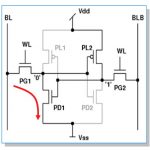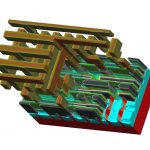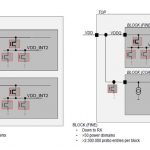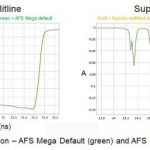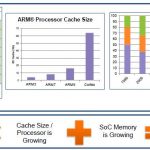You are currently viewing SemiWiki as a guest which gives you limited access to the site. To view blog comments and experience other SemiWiki features you must be a registered member. Registration is fast, simple, and absolutely free so please,
join our community today!
My IC design career started out with DRAM at Intel, and included SRAM embedded in GPUs, so I recall some common questions that face memory IP designers even today, like:
- Does reading a bit flip the stored data?
- Can I write both 0 and 1 into every cell?
- Will read access times be met?
- While lowering the supply voltage does the cell data retain?
…
Read More
Kilopass has a new VP of engineering, Jen-Tai Hsu. I sat down with him last week to find out where he came from and where he and Kilopass are going.
He grew up in Taiwan and went to National Taiwan University where he studied electrical engineering. Then he came to the US and went to Case Western Reserve University to get a masters degree,… Read More
Wearables and the Internet of Things (IoT) in general are all about low power. Everyone must have read (or even experienced) the phenomenon of putting something like a Fitbit on and then after a short period leaving it in a drawer or putting it to recharge and forgetting about it for weeks. The longer devices can last the more likely… Read More
In the beginning of this decade there was a lot of buzz around 3D chip manufacturing. Many EDA tools were developed to facilitate semiconductor designs in 3D space. Naturally, we are moving to the edge on 2D without much room to further squeeze transistors and interconnect. However, lately I haven’t heard much about 3D products.… Read More
I could have written the sequence of the title in reverse order, but no, design is the one which initiates the need of a particular flow and the flow needs support of EDA tools to satisfy that need. It’s okay if the design is small; some manual procedures and workarounds/scripts may be able to perform certain jobs. However, as the design… Read More
As I mentioned in BDA Takes on FinFET Based Memories with AFS Mega:
Is AFS Mega real? Of course it is, I’m an SRAM guy and I worked with BDA on this product so I know. But don’t take my word for it, stay tuned for endorsements from the top SRAM suppliers around the world.
Here is the first customer endorsement from the #1 foundry.… Read More
Berkeley Design Automation today announced the first silicon-accurate circuit simulation for mega-scale arrays like memories and CMOS image sensors. If this tool lives up to its claims, it is going to be a big deal for FinFET-based circuits, Memory designers are rightly worried about having the accuracy necessary to include… Read More
Once upon a time, ASIC designers were integrating memories in their design (using a memory compiler being part of the design tools provided by the ASIC vendor), then they had to make the memory observable, controllable… and start developing the test program for the function, not a very enthusiastic task (“AAAA” and “5555” and other… Read More
With an estimated 7 billion connected devices, the demand for rich content, including video, games, and mobile apps is skyrocketing. Service providers around the globe are scrambling to transform their networks to satisfy the overwhelming demand for content bandwidth. Over the next few years, they will be looking to network… Read More
Economic considerations are a primary driver in determining which technology solutions will be selected, and how they will be implemented in a company’s design environment. In the process of developing Memoir’s Algorithmic Memory technology and our Renaissance product line, we have held fast to two basic premises: Our technology… Read More


